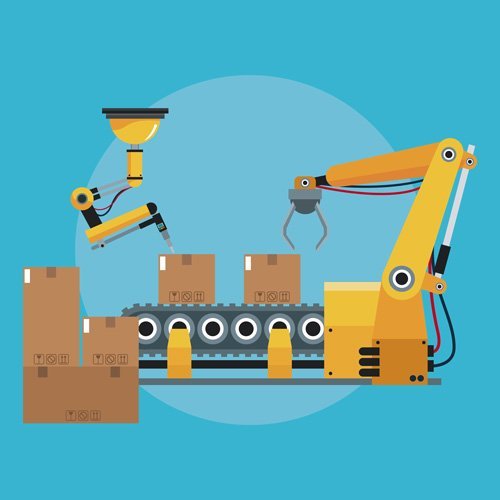
by The HLH Team
In most industries, a defect waste means repair costs, potential reputational damage, and, if public safety is affected, a potential recall. In healthcare, it means patients stay sick, get sicker, and may even die.
Misdiagnosis:
Misdiagnosis is the granddaddy of all defects, and the consequences can be deadly. On top of the potential cost to your patient’s well-being, your clinic could be sued and a massive blow could be dealt to your reputation.
Here are a few of the most common causes of misdiagnosis:
- Doctor Subjectivity: We’re all human, and sometimes we have built-in judgements when meeting people. If a doctor has any personal feelings toward a patient, positive or negative, they have the potential to cloud judgement. Personal awareness on the doctor’s part (and acceptance that exists with it) is vital.
- Poor Communication: This could be either inadequate doctor-patient communication or incomplete communication between medical professionals. The best way to deal with this is to slow down. Take a breath and make sure that the other party hears you, feels heard, and that both sides have a chance to synthesize the information before hustling onwards. Everyone is busy, but making sure we understand the facts is one of the most important jobs in medicine.
- No Fault Errors: This is when a patient deliberately undermines the diagnostic process, likely by providing false information. Motives vary, but keeping vigorous notes is the best defense.
- System Related: This could be due to a number of things, from a faulty test (human-caused or otherwise), incomplete medical training, or an organizational failure. Audit these processes one by one to make sure they’re appropriate.
- Incomplete Judgement: Like communication, this is largely caused by rushing. Unlike communication, it concerns only the doctor. Every patient presents a puzzle and the Doctor doesn’t know how important each piece is until they’re together. Family history, test results, and, of course, current conditions all play their part. If the doctor rushes when putting the puzzle together, he or she may miss the significance of an important piece. The key here is to give your doctors the breathing room they need to be able to make the right decision.
Data Entry:
Healthcare has its share of administrative defects. Some of these, like typos from entering handwritten intake forms, are low hanging fruit.
Have a tablet available for those willing and comfortable to fill out their form. Every time data passes through human hands especially when interpreting handwriting, the chance for defects increases. Eliminate the extra step and you’ll trim waste.
Prescriptions:
 Closely related to misdiagnosis, writing the wrong prescription or issuing the wrong medicine at the pharmacy can have the same deadly results. Luckily, these instances are rare; more often, the defect at the pharmaceutical level is the pharmacy technician miscounting pills.
Closely related to misdiagnosis, writing the wrong prescription or issuing the wrong medicine at the pharmacy can have the same deadly results. Luckily, these instances are rare; more often, the defect at the pharmaceutical level is the pharmacy technician miscounting pills.
Give them permission to slow down and count again. Remember, if a patient calls claiming that they got 88 pills instead of 90, the worst thing you can do is call them a liar. Treat them with respect and, once you’ve dealt with their issue, chat with the pharmacy technician in a respectful way to see if it was a one-time accident or if there may be issues of fatigue or personal stress at play.

by The HLH Team
Construction Defects can be crippling, and what makes it worse is how avoidable they are. This Waste is closely linked to Talent, because the key to catching them early is empowering your workers to monitor and speak up.
If the inspector finds a Defect, it’s costly to fix. If the customer finds it after the job is completed, it can be devastating both to cash flow and, more importantly, reputation. Train your foreman and all workers to be vigilant. Have them take the extra 20 minutes at the end of a task to inspect their work before moving on.
Catch it Early:
Construction Defects could be anywhere from annoying to catastrophic, and the difference often hinges on how early you catch it. A flaw in the foundation that only manifests after completion is far costlier than noticing it during the pour.
You can’t do it all yourself. Train every worker with basic leadership skills so they feel empowered to look for and report any possible defects.
Don’t create an atmosphere of fear. If a worker thinks they’ll take the blame and the penalty for something, they’re less likely to report it. Even if it is their fault, it saves money to have them tell you about it, knowing that you’ll be constructive in helping them to ensure it doesn’t happen again.
Check your Materials:
 Hopefully you’re already inspecting all materials as they’re delivered. If they’re new, the process is simple: don’t accept faulty materials. If the lumber is warped or the insulation is damaged, you don’t accept it.
Hopefully you’re already inspecting all materials as they’re delivered. If they’re new, the process is simple: don’t accept faulty materials. If the lumber is warped or the insulation is damaged, you don’t accept it.
Wastes blur together. If you over-produced one job, and need to flip those materials to the next, you no longer have any recourse for materials that have been shipped, tossed, exposed, and otherwise pummelled. The Defects may be visible or hidden.
Using defective materials is never worth it. Defects will always manifest themselves, whether in an hour or a month, and you’ll be working backwards to fix it. Dump the defective materials, and accept the loss as a hard lesson for avoiding Overproduction next time.
Remove Variation:
Lean tactics often overlap several Wastes. Standardization is key in avoiding Over-processing, but it’s just as useful for tackling Defects. Construction can often feel like herding cats, so a shift to Leaner thinking from all parties needs to be a prerequisite.
There may be several “right” ways to do something, but there’s only one “best” way. The best way is achieved through balancing efficiency (to avoid Over-processing and Time Wastes) with quality (to avoid Defects).
Identify the best way and document it. Train the your workers on it and standardize those practices on your worksite to create predictable results every time.
Lean Thinking:
Lean construction is about putting the value of the project above the needs of the individual stakeholders. It seeks to replace the feudal system of each contractor, looking out for themselves, with a more decentralized model of authority, where each partner takes their commitment to the overall value seriously.
Ultimately, standardizing processes to reduce Defects requires this shift in thinking. If the project managers empower all stakeholders to feel engaged in creating the overall value of the project, so it assumes more meaning than the average work day, they will start to be eyes on the ground, actively watching for Defects to emerge.

by The HLH Team
Defects are the easiest Waste to spot. The trick to this Waste is spotting them before the product goes out your door, into the public eye. By the time you catch a Defect, the lost production cash is often the least of your worries. Loss to reputation, angry customers, and the cost of repairs all trump wasted productions costs. Often, the insult to injury is paying people to throw it away.
Layers of Expensive:
By the time you notice a Defect on a finished product, you’ve already put maximum resources into the product. Like Over-Inventory, that has the effect of freezing your cash into that product. Unlike Over-Inventory, you usually can’t just discount it to sell. You’ll need to put more money into repairs first.
Proactivity is the best defense. The earlier in the process you see a defect happening, whether through a bad part or sloppy process, the better. It becomes more expensive the farther in the process it goes.
Empowering Staff:
 Even an engaged manager can’t be on the production floor all the time. Defects happen everywhere, but whether they’re caught or missed depends on how many people are actively monitoring.
Even an engaged manager can’t be on the production floor all the time. Defects happen everywhere, but whether they’re caught or missed depends on how many people are actively monitoring.
Your team needs to care about spotting Defects. They need to be engaged in the process improvement process. To be engaged, they need to know that they won’t be blamed or punished for Defects they point out, and they must want to help improve the company.
Talk to them about their ideas. Formal and scheduled are necessary, but also strive to create a rapport where you can chat informally, wherever you are, and they feel heard.
Reputation:
There’s no such thing as a non-competitive industry. If your product doesn’t meet customer expectations, your competition is an email away. It needs to be right.
Company brand and reputation takes a long time to build, but it can fall apart overnight. If the Defects pile up, even loyal customers will start to suspect that something is internally “off.”
If the Defect is safety related, you could have a recall on your hands. That’s when waste becomes exponential and downright dangerous. Audit how you inspect finished product before it leaves. Is it a visual inspection, or are you performing random checks? If you’re relying on people to check them, formalize that process. Make sure those responsible are trustworthy.
Processes:
Defects can have crippling consequences. But often the very processes that we cut to save money, whether that’s redundant eyes on product or slightly lower-grade raw material, are the things that prevented them.
Before you cut a process, take a step back and ask why this process exists in the first place. It was made for a reason; trace it back to that reason. You may find that the extra spotter is there because defective widgets slipped through before.
Sometimes processes are around so long that their benefits get built in, forgotten, and become invisible. Then, when we get excited about process improvement, we cut them. Be vigilant to prevent cutting necessary processes.

by The HLH Team
“The most dangerous kind of waste is the waste we do not recognize.”
-Shigeo Shingo
 Lean applies to every industry, not just manufacturing. Working in an office doesn’t mean you aren’t probably surrounded by waste.
Lean applies to every industry, not just manufacturing. Working in an office doesn’t mean you aren’t probably surrounded by waste.
In the last article (Waste In The Office Part 1) I introduced how 4 of the 8 deadly wastes reared their heads in office spaces. Let’s look at the other 4.
Bottom line: just because you’re in an office, don’t be fooled. You’re surrounded by waste. Let’s talk about how:
Motion:
How many times do you walk to the printer every day? When was the last time the stapler was where you left it? In an office, wasted motion is counted in steps. Whether it’s to the coffee maker or the mail slot, the less people are milling around an office space the better the productivity tends to be.
If you want to get a feel for how much motion you waste, make a Spaghetti Chart. Every journey becomes a line and it repeats all day. At day’s end, how many trips have you made where?
Waiting:
On an assembly line, we measure waiting in the seconds a worker spends idle until the next widget arrives. In an office, it’s subtler but essentially the same thing.
When a file or email goes up the chain for approval, how long before it’s sent back? Does the boss clear the logjam as it builds or wait until people’s jobs are put on hold before signing off to get them moving again.
If you’re the boss, think about how many things you’re needed to sign off on. Can you reduce this number, delegating more decision making to the team you trust? Having to sign-off fewer items will not only cut waiting waste, it will reduce the steps involved in your process considerably.
Overprocessing:
Your clients hired you to do a, b, and c. Whether a contract or a handshake, they expect a certain level of service. It’s your job to deliver the a, b, and c. Your customer isn’t expecting “d”. If you deliver it, it will cost you real money and you’ll get little in return. That’s waste.
The ironic thing is that when we “go the extra mile,” our clients often don’t even notice. You wouldn’t give a grocery cashier more than the bill requires, so don’t do more than your contract requires. It will strengthen your firm in the long run by giving you the flexibility of a better bottom line.
Overproduction:
Overproduction waste happens when you produce too much, too quickly. It’s counterintuitive, but having more work done than is needed is actually more wasteful than doing it on time.
Every office has processes that move at a certain pace. When we do our work faster than those processes, it piles up waiting for the next step. This can lead to broken momentum and cost more time overall.

by The HLH Team
“The most dangerous kind of waste is the waste we do not recognize.”
-Shigeo Shingo
You rarely find the word “Lean” without “manufacturing” beside it. Lean’s origins are in the Toyota production system, but it’s grown far beyond that application. Lean is a methodology focused on increasing profits by reducing waste. While it began with manufacturing, industries from software development to dentistry have adapted it in bids to be more competitive.
Bottom line: just because you’re in an office, don’t be fooled. You’re surrounded by waste. Let’s talk about how:
Transportation:
No fleet of trucks doesn’t mean you’re off the hook for this one. From getting your paper delivered (how much does that cost and could someone pick it up on the way to work?) to the mail cart, transportation waste is everywhere.
How far are people travelling to meetings and getting stuck in traffic on your dime? How many of those meetings could be video conferences, instead? Unless face to face is critical, you can do everything remotely (even sign).
Inventory:
Just because you’re not dealing with warehouses of widgets doesn’t mean you don’t have inventory waste. Inventory is broader than manufactured items to sell. It’s the accumulation of anything that we produce, whether goods or services.
 How many unfinished projects have piled up in your inbox and in your brain? They’re slowly draining your energy the longer they’re not finalized. Finishing the projects you start will keep your focus sharp and your desk efficient.
How many unfinished projects have piled up in your inbox and in your brain? They’re slowly draining your energy the longer they’re not finalized. Finishing the projects you start will keep your focus sharp and your desk efficient.
Email is a type of inventory. How many are in your inbox, either opened or no? Many of the most efficient people keep their inboxes trimmed to one page or less.
Defects:
Defects are pinholes in a boat, slowly letting the water in to sink the profitability. It’s also the frustrating waste because it’s jarringly avoidable.
A simple typo or spreadsheet formula error in an important document can cost money, destabilize client relationships, and do long term damage to your reputation. The longer a defect goes unnoticed, the more damage it tends to do.
To fight defects, don’t succumb to the temptation of not editing. A second pair of eyes costs money, but can catch the errors likely to cost you much more.
Talent:
I saved the worst for last. Unused talent is everywhere in offices. Every member of your team has skills and ways to contribute that didn’t come out in their interview. It’s up to management to create a culture where people feel valued enough to step up and use their talents to the fullest.
If staff don’t feel like their ideas matter, they’ll bite their tongues, feel unheard, and not come to you about the inefficiencies that are bugging them. Meanwhile, you’ll bring in expensive consultants to give you the same ideas.
Those ideas will flounder in implementation because your team won’t buy into them, and you’ll end up just as inefficient, thousands of dollars poorer, and downright demoralized.
So listen to your team. Take their ideas seriously. It will save you money.

by The HLH Team
Over-Inventory is the king of the deadly wastes. It can be disastrously expensive as it ties up vital cash flows and potentially drives down the value of your product and, by extension, your brand.

Cost upon Cost
Producing inventory costs a lot of money. You need to buy the raw materials, get them shipped, hire and train staff, invest in equipment, and spend money on overhead. A useful exercise is to calculate how much money goes into each product that you make. Write it on a sticky note if you want and stick it right onto the product.
Whatever cost went into making the product equals how much cash has been frozen into it.
Until that product is sold, that cash is as good as gone. Until that product is sold, it will cost you to store it, every time you move it, to heat or cool it, and keep track of it.If the product doesn’t sell, you may need to discount it, which could potentially devalue your brand. If it sits there too long, it may go obsolete and become worth less than you’ve invested into it. If it gets damaged and you need to throw it away, the cost of doing that is an extra kick in the pants.

Close to the Rocks
Think of your inventory as water level in a bay, and your company as a ship. When the water rises, it lifts the ship with it and hides all the rocks and dangers that were visible during low water levels. Those rocks are the other deadly wastes; one of the worst things about over-inventory is that it hides many other wastes within it. It’s harder to identify wastes like defects and transportation with high inventory because they’re not as visible.
Staying close to the rocks means keeping the water level low. While sailing on the smooth open water of high inventory can be very comfortable, it will cost you dearly in the long run. Just-in-Time production, a hallmark of Lean methodology, is a radical shifting of production methods from company “pushed” to customer “pulled.”
In Lean, the apparatus of production is pointed at the customer, and shifts into gear when the customer places an order. While it may take time to implement, just-in-time will dramatically reduce over-inventory waste in the long run.


 Closely related to misdiagnosis, writing the wrong prescription or issuing the wrong medicine at the pharmacy can have the same deadly results. Luckily, these instances are rare; more often, the defect at the pharmaceutical level is the pharmacy technician miscounting pills.
Closely related to misdiagnosis, writing the wrong prescription or issuing the wrong medicine at the pharmacy can have the same deadly results. Luckily, these instances are rare; more often, the defect at the pharmaceutical level is the pharmacy technician miscounting pills.

 Hopefully you’re already inspecting all materials as they’re delivered. If they’re new, the process is simple: don’t accept faulty materials. If the lumber is warped or the insulation is damaged, you don’t accept it.
Hopefully you’re already inspecting all materials as they’re delivered. If they’re new, the process is simple: don’t accept faulty materials. If the lumber is warped or the insulation is damaged, you don’t accept it.
 Even an engaged manager can’t be on the production floor all the time. Defects happen everywhere, but whether they’re caught or missed depends on how many people are actively monitoring.
Even an engaged manager can’t be on the production floor all the time. Defects happen everywhere, but whether they’re caught or missed depends on how many people are actively monitoring.
 Lean applies to every industry, not just manufacturing. Working in an office doesn’t mean you aren’t probably surrounded by waste.
Lean applies to every industry, not just manufacturing. Working in an office doesn’t mean you aren’t probably surrounded by waste.
 How many unfinished projects have piled up in your inbox and in your brain? They’re slowly draining your energy the longer they’re not finalized. Finishing the projects you start will keep your focus sharp and your desk efficient.
How many unfinished projects have piled up in your inbox and in your brain? They’re slowly draining your energy the longer they’re not finalized. Finishing the projects you start will keep your focus sharp and your desk efficient.






